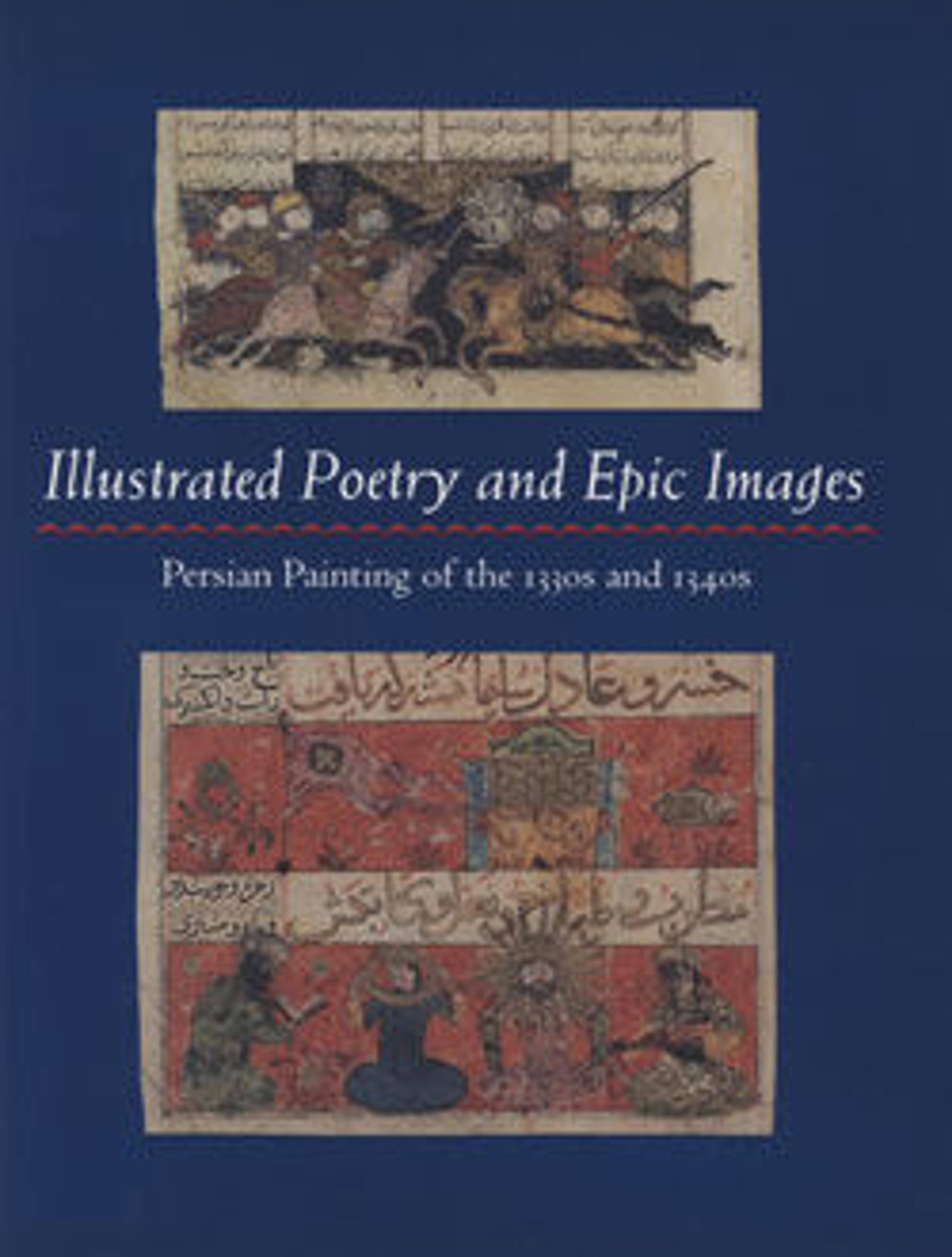"Rustam Lassos the Khaqan of Chin, Pulling him from his White Elephant", Folio from a Shahnama (Book of Kings)
The Khaqan (khan) of Chin (China) become an ally of the Turanians and faced the Iranians with a vast army, including many sumptuously adorned war elephants. Rustam, despite the enormous odds, was determined to capture the khan and take the booty to the Iranian shah, Kai Khusrau. Rustam charged through a barrage of missiles unscathed, flung his lasso, pulled the khan from his white elephant, bound him as a prisoner, and duly sent the loot to the shah. Although the confrontation has been reduced to the two principals and their attendant warriors, the presentation is still dramatic, with Rustam tightening the taut rope and the khan vainly trying to resist.
Artwork Details
- Title: "Rustam Lassos the Khaqan of Chin, Pulling him from his White Elephant", Folio from a Shahnama (Book of Kings)
- Author: Abu'l Qasim Firdausi (Iranian, Paj ca. 940/41–1020 Tus)
- Date: ca. 1330–40
- Geography: Attributed to Iran, probably Isfahan
- Medium: Ink, opaque watercolor, gold, and silver on paper
- Dimensions: Page:
H. 8 1/16 in. (20.5 cm)
W. 5 1/4 in. (13.3 cm)
Painting:
H. 1 7/16 in. (3.7 cm)
W. 4 3/16 in. (10.6 cm) - Classification: Codices
- Credit Line: Bequest of Monroe C. Gutman, 1974
- Object Number: 1974.290.13
- Curatorial Department: Islamic Art
More Artwork
Research Resources
The Met provides unparalleled resources for research and welcomes an international community of students and scholars. The Met's Open Access API is where creators and researchers can connect to the The Met collection. Open Access data and public domain images are available for unrestricted commercial and noncommercial use without permission or fee.
To request images under copyright and other restrictions, please use this Image Request form.
Feedback
We continue to research and examine historical and cultural context for objects in The Met collection. If you have comments or questions about this object record, please complete and submit this form. The Museum looks forward to receiving your comments.
